Bara Underground Art Genre
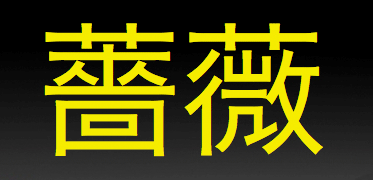
The underground art genre known as bara attracts a smaller audience compared to other better-known genres of visual works and storytelling. The little word is shortened from barazoku, which in Japanese means rose-tribe—a code phrase to express Japanese heterosexual prejudice against gay men—proudly adopted as the name of popular gay men’s print magazine (published from 1971 to 2004.) The term bara is commonly used throughout the Western world but not nowadays in Japan.
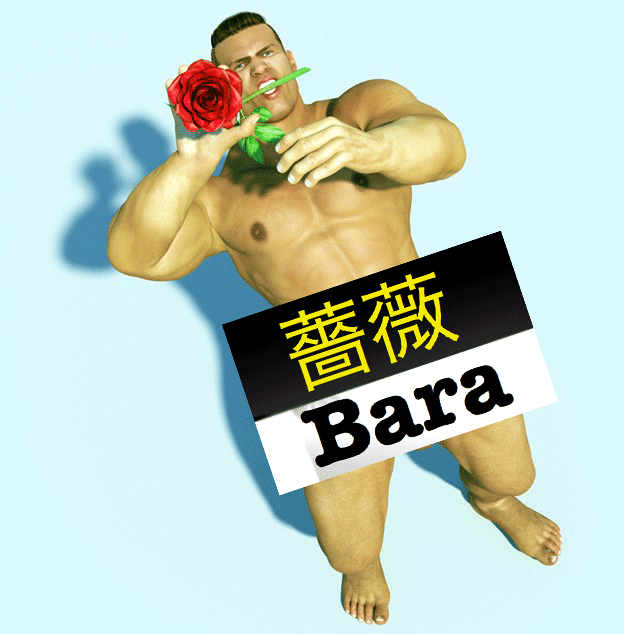
One significant trait is that works in the bara genre depict men in peril and such works are produced by gay men for gay men differs from yaoi which is created by female storytellers and artists for a female audience.
At its core the bara underground art genre is renegade art that pushes back and opposes other more plain vanilla art by including male erotic cruelty and harsh treatment of men inflicting pain and peril upon them. This genre continues to evolve and influence contemporary art practices. Artists around the world are drawing inspiration from the genre’s themes of masculinity, eroticism, and queer identity. The genre has also had a significant impact on the representation of LGBTQ+ identity in art, challenging traditional gender and sexuality norms.
Bara Threat
I tend to push the limits of storytelling by taking bara as far as is possible to go. I tell stories in text and images about masculine men involved with one another to provoke the viewer. I have seen all my life how straight people do not like to see masculine men showing affection towards one another. Straight people will accept drag shows and comedies about effeminate gay men. And why not? Those are completely non-threatening and humorous. But, if masculine men are depicted in a story or images showing sexual interest in one another, oh wow, that suddenly becomes very threatening to straight people!
Some gay men I have encountered also find it uncomfortable to witness masculine men showing sexual interest in one another. Some gays even relegate such masculine men to the pejorative category of being “too butch.”
For all of these reasons, I choose to provoke the viewer or reader in my stories and illustrations as is commonly experienced within most works like mine in the bara genre. A good example of provoking the view is found in my work which is known as “Vice City.”
Vice City Art by Madeira Desouza
 Watch a 5-minute YouTube video and see images that go with the text description that you are looking at here on this page.
Watch a 5-minute YouTube video and see images that go with the text description that you are looking at here on this page.
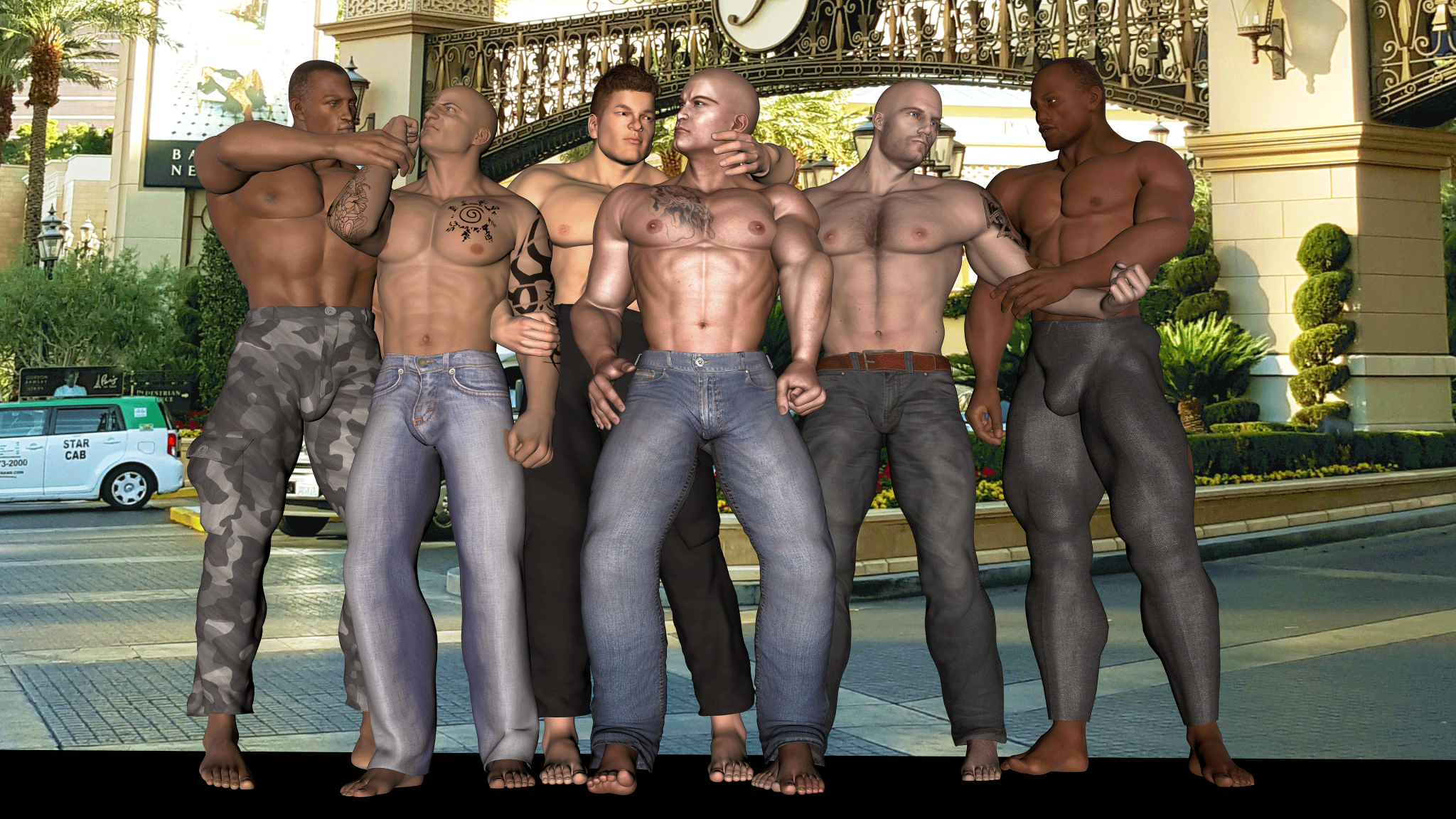
Rethinking Masculinity
As an openly gay male Las Vegas artist, Madeira Desouza consistently creates artworks which present a unique and challenging representation of masculinity. His queer art is within the bara underground art genre and as is typical of this genre, Madeira Desouza’s artworks are known for featuring hypermasculine men, muscular, aggressive, and sexualized, often in stark contrast to the conventional portrayal of masculinity in mainstream media. The art of Madeira Desouza challenges the traditional notions of masculinity as a stoic and dominant force, instead portraying it as complicated, fluid, and at times, unstable.One of his most representative works is known as “Vice City” even though that was never the title provided by the artist, himself. In the 3D digital art image there are six muscular men with either shaved heads or military-style haircuts and some have strongly masculine tattoos. The men in the digital rendering appear as if though were photographed at the entrance to a resort casino on the Las Vegas Strip.
In this image you see these guys all are shirtless and their beefy bodies draw attention to exaggerated muscles and sexual appeal. Three of the men are dominating the other three men. The viewer is free to decide what they see happening there because although the tension in the scene is crystal clear, the story of what happens next is left open. This kind of depiction of men is what Madeira Desouza does consistently showing his ideal of masculinity. He depicts male characters who reveal well-defined muscles and aggressive energy. These male characters can be understood as representing an idealized man or most desirable man.

However, Madeira Desouza’s depiction of male masculinity in “Vice City” and also in his other works takes a different turn from what is typical of male character depictions online. His works show an emphasis on the male body is not only for the obvious sexual appeal, but also for showcasing a sense of vulnerability and exposure. The artist challenges the traditional representations of masculinity while questioning the societal paradigms that define masculinity. Madeira Desouza’s artwork presents men as vulnerable, emotionally complex beings who are subject to desire and are shaped by their surroundings.
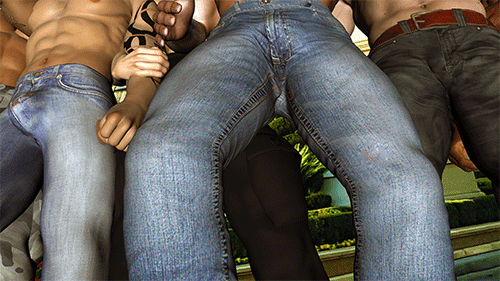
Madeira Desouza’s art is in opposition to traditional notions of masculinity because it emphasizes the complexity and diversity which shape masculinity that can be found in day-to-day human life . By depicting men who may not conform to the heteronormative understanding of masculinity, he highlights the fluidity of gender and sexuality, and how these elements are merely social constructs rather than fixed, unchanging identities.
Moreover, Madeira Desouza’s artwork is influenced by the cultural and societal shifts he witnesses as a gay man living in Las Vegas, where masculinity is often exaggerated and performed for a public audience. One real-life and vivid example of masculinity performances in Las Vegas happens on Fremont Street where male street performers invite visitors to pay $20 for the opportunity to kick them in their balls and stand by to watch how they react.
As an LGBTQ artist, Madeira Desouza’s work is inherently political and socially combative since his art pushes against the binary constraints of gender and queer identity. Mainstream perceptions of masculinity are not what impresses Madeira Desouza one bit.
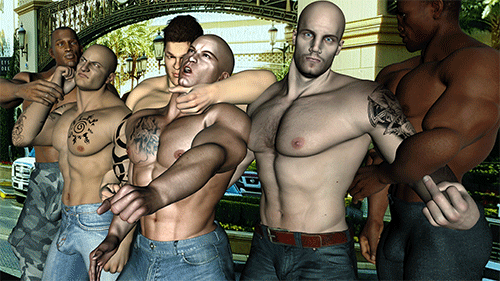
Madeira Desouza’s art offers an alternative and unconventional representation of masculinity by questioning the traditional notions of who men are supposed to be and why. Through his artwork, he proves the uselessness of the toxic masculinity claims made by feminists and he creates space for diversity and fluidity in the understanding of male gender-specific roles and behaviors. His art encourages critical thinking and challenges viewers to consider their own beliefs and biases that form the basis for perceptions of masculinity. Ultimately, Madeira Desouza’s art presents a strong opportunity to rethink masculinity in a way that is based upon real-world traits that men genuinely show, not what social theorists want us to believe about male behaviors.
His art is a provocative and formidable exploration of male gender, power, and sexuality. He uses complex and controversial themes in ways that defy and poke fun at conventional norms and beliefs, while also raising important questions about representation, objectification, and the physical and emotional harm that men can and do cause other men. As such, the art of Madeira Desouza is an active and ongoing contribution to emerging social considerations of gender, sexuality, and representation in contemporary art and in our society today.
Watch YouTube Video:
 Watch a 5-minute YouTube video and see images that go with the text description that you are looking at here on this page.
Watch a 5-minute YouTube video and see images that go with the text description that you are looking at here on this page.